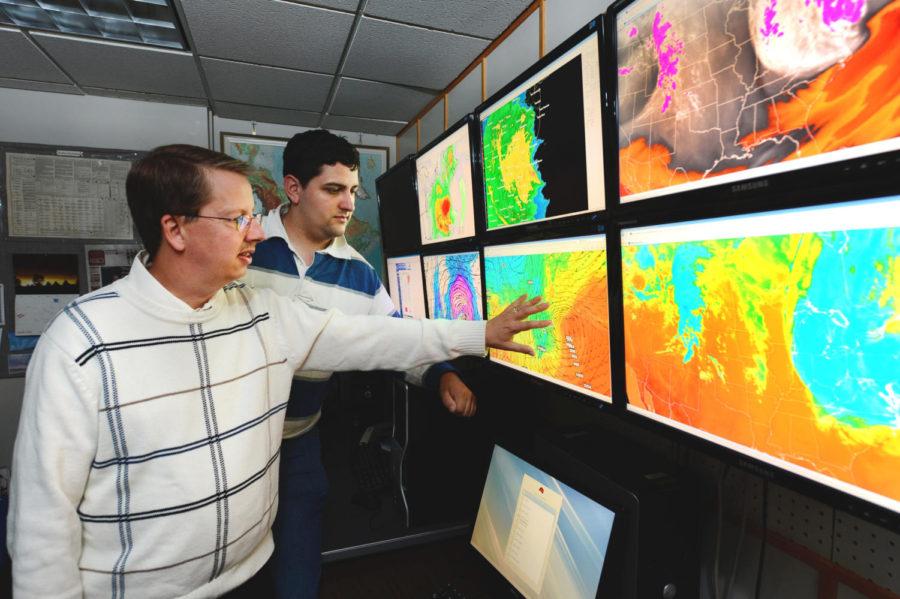Meteorologists keep spectators and athletes safe on game day
William Gallus, professor of geological and atmospheric sciences, works with Tim Marquis, graduate student, to prepare forecasts for Cyclone football, soccer, softball and track to make sure everyone will be safe on game day.
November 22, 2012
Cyclone fans know it is officially game time when sirens blare and the mystifying load speakers blast: “This is a Cyclone weather alert.” But would happen if an actual strong storms were approaching Jack Trice Stadium?
Fortunately, William Gallus, professor of geological and atmospheric sciences, and a team of ISU students are on the job. The collaboration with Gallus and the university athletic program is the first of its scale.
“Our work is voluntary without any funding and is a nice way for meteorology students to try to help athletics,” Gallus said. “This opportunity to help the athletic program also helps our students gain experience.”
How this opportunity helps the athletic department can be seen in weather-related tragedies all across the nation.
The Indiana State Fair stage collapsing due to severe winds or having a Notre Dame student falling to his death due to high winds knocking over his video tower is just some examples of how weather can turn any game day into a tragedy.
Timothy Marquis, graduate student in geological and atmospheric sciences, is one of the students who study weather on game day. Marquis started working with the athletic department in early fall of 2011. During Marquis’ senior year of his undergraduate career at the University of Oklahoma, he wrote a thesis about a severe weather action plan for the golf course.
“When I came to Iowa State, several large venue tragedies had occurred recently,” Marquis said. “As a meteorologist, [I saw] something had to be done. … These events could have been prevented.”
Marquis said a minimum of 30 minutes is needed for fans to get from the Jack Trice Stadium to shelter in Hilton Coliseum and CY Stephens Auditorium. However, Marquis said the National Weather Service averages only about 12 minutes of a warning before a severe thunderstorm and tornado warnings.
Gallus and Marquis recognize that not every weather-threatening situation can be easily predicted to a specific location such as Jack Trice Stadium.
“Some phenomena, like lightning, are very hard to predict precisely,” Gallus said. “So far, though, we’ve only had one day where there was that threat, and it ended up avoiding us.”
That threat was the Kansas State game Oct. 13 and was one of the craziest forecasts the two men said they have ever predicated.
The models 16 days before the football game showed a severe lightning was possible for the first half of the game. For the second half of the game a tornado event was predicted to be near the stadium. However, models from four days out to two days out showed the storm models falling apart and the storm was slowing down.
“You are the only person that can ultimately protect themselves during bad weather. Officials can’t eliminate the threat of injury from lightning, or a tornado,” Gallus said. “Students should always pay attention to weather forecasts and follow the advice given by authorities, to increase their chances of avoiding problems.”







